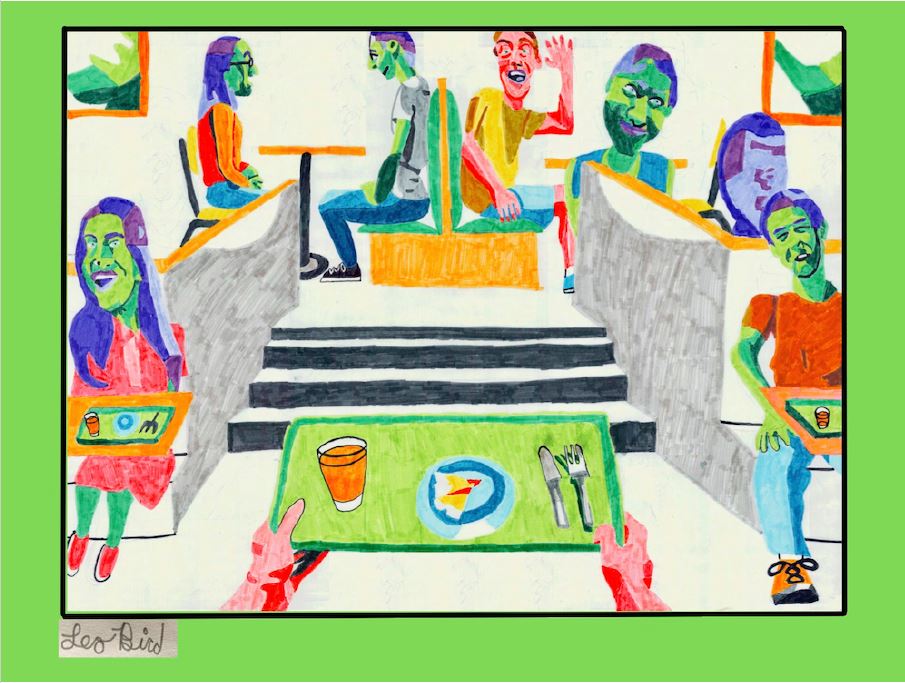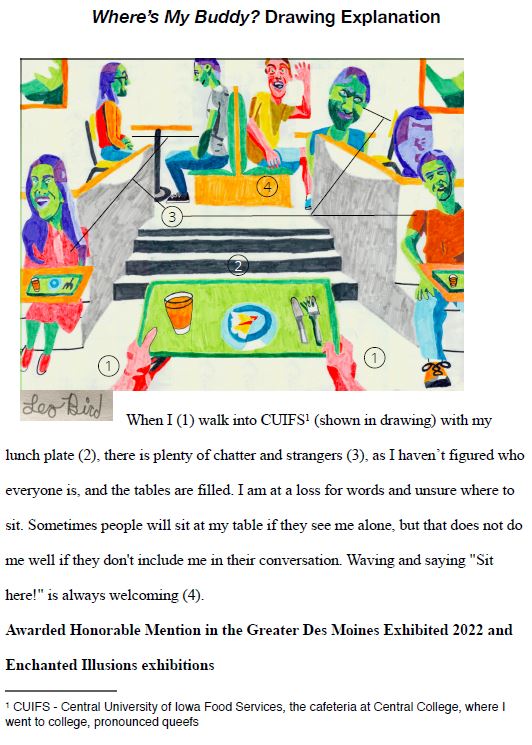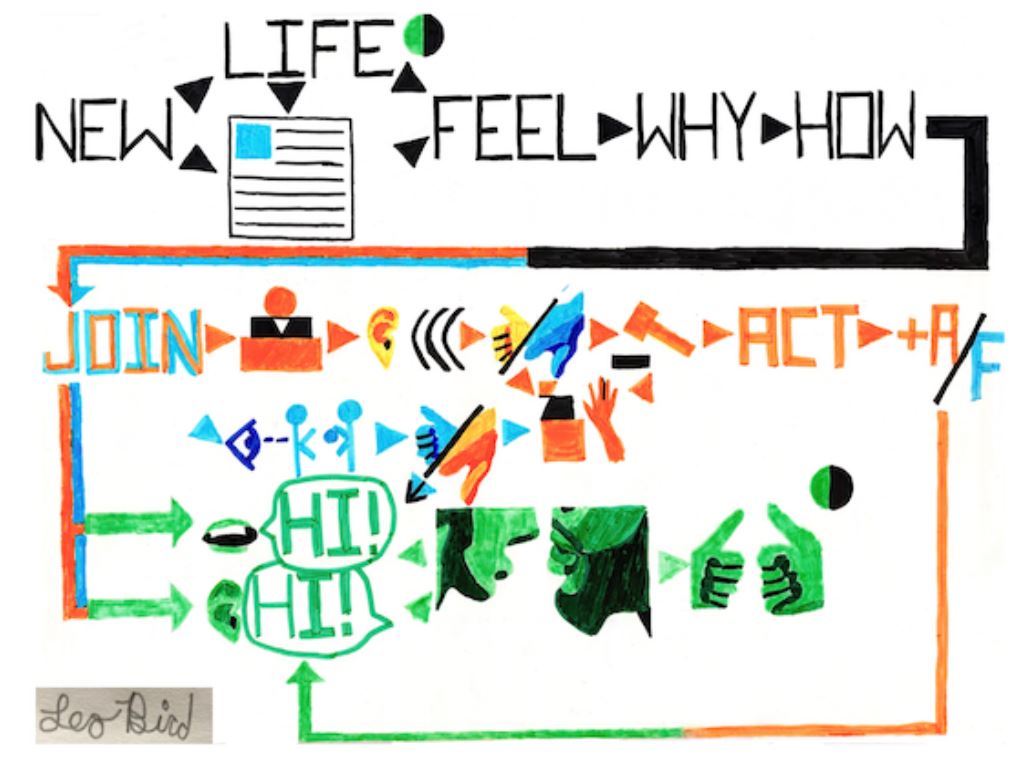Room at the Table
Tuesday, February 14, 2023
Short read
- Loneliness is epic in scale: you may be lonely but, ironically, you are most definitely not alone
- The social design of modern life reinforces loneliness
- Loneliness has serious health consequences
- We are in deep need of creative solutions to facilitate human connection
- Leo Bird figured a few things out about how to overcome loneliness
The whole story
Leo Bird knows what it’s like to walk into a cafeteria and be faced with what might seem like a mild dilemma: where to sit. Except it’s not mild, not mild at all. Leo, the college student son of one of my longtime/lifetime friends, was lonely and didn’t know anyone. He was also self-conscious about sitting alone, something we might think of as an insecurity confined to childhood, but come on, is it really? If you were sitting alone at a conference table in a meeting and no one came to fill out your table, you wouldn’t begin to feel uncomfortable and potentially even a little bad about yourself by the end of the meeting?
As a society, we are starting to talk more about loneliness and are growing our understanding of how
un-trivial it is to our health and even longevity. Loneliness is a serious social phenomenon. The irony is that Leo may be lonely but he’s not alone: it’s estimated that more than
1 in 3 people are seriously lonely. What’s going on? Have we always been this lonely?
According to Lee Colaluca, Vice President of Marketing and Partnerships at
The Foundation for Art & Healing, the pandemic has worsened our sense of isolation, but modern society has been setting the stage for loneliness for quite some time. “At The Foundation for Art & Healing, we began our signature initiative,
Project UnLonely, in 2016 well before Covid. From the independent way we now live with just one generation under one roof to the virtual way we socialize, work and learn, modern life is increasingly moving in the direction of disconnection,” Lee says. “Add to that any aspect of our experience that separates us from those in our midst and we’ve got an alarming number of people who are not getting the sense of connection that they want.”
Both a societal problem and a painfully personal one, what to do with loneliness poses a creative problem, which is exactly how Project UnLonely approaches the solution, using the arts as a portal for engagement and understanding. Creativity has also been Leo’s approach, having turned to writing stories and, in time, art to help him understand and express what his loneliness looked like and sort out how he might go about solving it. He’s accomplished this with great success, having found community in the creative world and having had his work on display in a number of galleries and art shows. In the piece below, you can see how the world looked to Leo as he stood in the Central College cafeteria doorway, trying to figure out where to sit, something so basic and yet so much can hinge on it.
Where’s My Buddy?

There you are, standing in the doorway with your tray, reading the room. Reading the room is key to finding a place to sit, with the hope, of course, that a friendly face will beckon. But how do we know how to read a room? Leo approaches learning how to read the room like any area of life that is not going as smoothly as he would like: he figures out the elements at play and what he might be missing about how these things go. It’s an approach Leo makes a point of actively employing so he can skillfully navigate the world. It’s a sound way to solve a problem.
You can see this process in action in the explanation accompanying the piece of art on exhibit in the frame below:

Breaking the experience down into chunks in this way specifically establishes the problem, the desired outcome, and the potential pitfalls which is Leo’s Step 1 in solving for lonely. He dives into the analysis in Step 2 with The Friendship Funnel, but first, how did we get so lonely?
How did we get so lonely?
People find themselves lonely at different points in their lives and for all kinds of different reasons. No one is above it, as if untouchable to loneliness. In fact, loneliness is fairly predictable, at least temporarily, for anyone who outlives their contemporaries, moves to a new town, starts a new job, works in a job that is isolating, goes through an experience other people aren’t going through or don’t understand, has a condition other people don’t, finds themselves in an environment with people who don’t share their views, sensibilities or interests and so many other things including having too much of life unfolding in the technical/virtual realm. It’s an equal opportunity experience.
As for the contributing factors for Leo’s loneliness, he has autism which has both the potential to amplify his sense of separation but at the same time it also predisposes him to analyze the way things work so that he might better understand what he needs to do in order to make his way in the world, something we can all learn from. To capture his analysis, he created a representational flow chart called “The Friendship Funnel” to map out what is ultimately necessary for a successful interaction that could begin to narrow the gap of loneliness.
The Friendship Funnel

When on exhibit, there is an accompanying key to the flowchart explaining how the flowchart works and the factors that shunt a person down less productive or more productive friendship paths. For the sake of space, I’ve summarized the conclusions from his analysis: if you want to have interesting conversations, you must say hi, you must observe, you must listen, and you must do interesting things yourself. As for finding the people to have interesting conversations with you, the best way is to join clubs and organizations and engage. Conceptually, this may all seem so simple and straightforward. It’s in the actual doing, though, that the magic happens.
Ultimately, Leo has created a pathway for having a say in his experience which is both empowering and universally useful for anyone who is looking to find a way through their own loneliness. There are small, incremental steps that can be taken. Leo took one step which led to another which led to another which led to another, which ultimately led him to visual storytelling and stand-up comedy clubs where he combines written word with visual art to tell his story with a light, comedic touch, a touch he discovered helps open up connections. Leo is always learning what loneliness has to teach us. He also suspects that the loneliness rate is even higher than we may think simply because people do not realize they could be having a more enriching social life than they do now. “You might not realize how lonely you are until you take a chance, take yourself out and see what’s possible.”
The art of inclusion
While Leo maps out and demonstrates how we all have so much more power than we may think we have to position ourselves for a different experience of life, at the same time, in the explanation of his painting,
Where’s My Buddy? he makes the point that we are all players in the social crisis of loneliness:
“Sometimes people will sit at my table if they see me alone, but that does not do me well if they don’t include me in their conversation.”
Including people in the conversation…that’s one way we can thoughtfully counter the conditions for loneliness built into the design of how we are now going about life where so much is virtual and lived from afar. Whether it’s in the cafeteria or in the development of programs and places like The Foundation for Art and Healing, the more our social design builds in disconnection, the more deliberate and welcoming we may need to be to preserve what makes us human: connection.
Note: Since college, Leo has joined local art groups (including a group of artists who identify as having a disability or life challenge), has had his work exhibited in galleries and events, has won multiple awards for her art, has performed stand-up at a number of different venues, and has been featured in a number of articles and interviews. He still gets lonely but not nearly so much, in part because he knows he’s not alone. And he has so much to say and share.
And so begins a brave new day. Together.
E